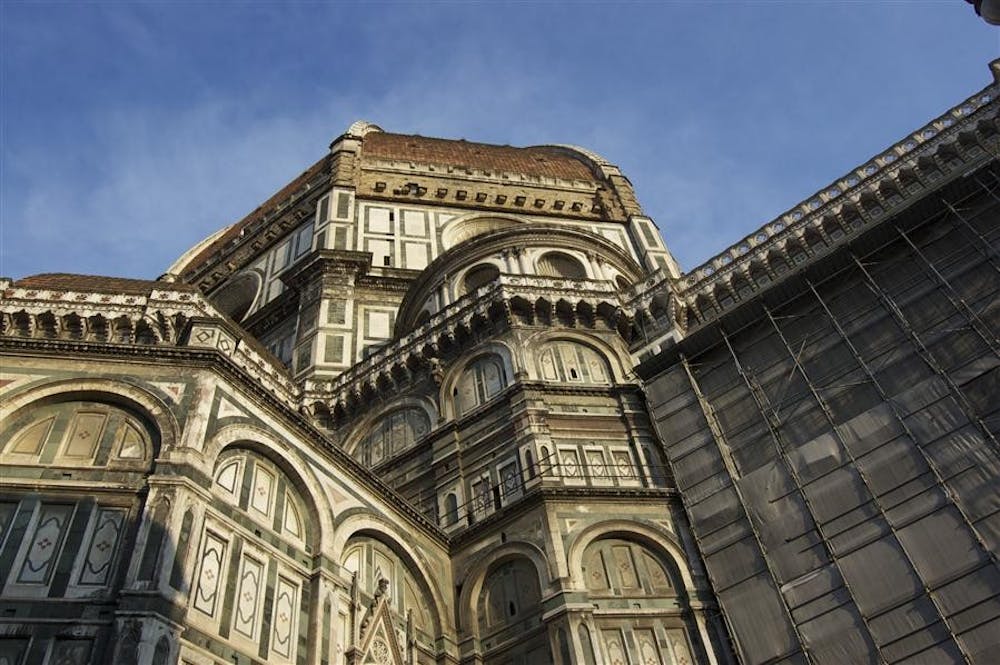Arriving in Venice was comparable to stepping off a space ship onto a foreign planet; it’s like going back in time and to a big, modern city all at once.
Our program director had told us that for the first few days nothing would seem real.
“It’s almost like a really well-made section of Epcot,” IU senior Sarah Wever said.
I couldn’t agree more. It seems unbelievable that these buildings were constructed by human hands and better yet, preserved by them for centuries.
The facades of each structure reflect architectural trends from the Gothic, Renaissance and Baroque eras, to generalize significantly. The oldest standing structure in Venice, the Santa Maria Assunta, was originally built in 639.
Even if there were roads, I would pray that cars were not allowed on them. The fact that you are forced to walk everywhere means that you are forced to slow down and really look at everything.
The most magnificent thing about Venice is that everything is meant to be beautiful, all of the things that we take for granted are the focus of artistic eyes.
Take the door, for example. The standard front door in the United States is a white, flat sheet of metal, potentially embellished with house numbers.
A Venetian door stands as a tall, thick, massive piece of dark, old wood. Brass bars and buttons strengthen and embellish the expanse of the entrance, and giant sculpturesque knobs and knockers protrude out toward visitors in the center.
A lion grasps a metal ring between its teeth, daring you to knock.
You walk past, padding down cobble stone streets, and if you can peel your eyes away from the scenery, you realize you are lost.
Somehow you wandered off the wide crowded street, into a narrow alley, admiring the pastel walls that tower on either side of you.
Then, distracted by overflowing flower boxes below every massive window, you wandered even further. The alley is now two feet wide, and a few yards ahead it ends abruptly in water.
In the few days since my arrival, I have gotten lost several times and wound up twisting my way through an enigmatic maze — only covering a relatively small portion of the island.
While having a map is handy, it’s not guaranteed to get you out of every pickle. Many of the small streets and alleys are not visible on the map, and most of the time you can’t find a street name anyway.
Attempting to utilize your stunning internal sense of direction won’t do you any good either, since so many of the streets twist and curve, following the contours of the canals.
There are 177 canals in Venice. If you can’t imagine how this would affect a city’s infrastructure, picture constructing all of the on-campus housing in immediate proximity to the Jordan River.
When you exit your dormitory, you step onto a wooden bridge that leads you to a narrow path that occasionally floods during the spring semester. Everything outside of established campus boundaries is an ocean.
I hope this helps you put Venice into perspective, but honestly folks, you really just need to come check this out for yourself, especially if you have any appreciation for anything beautiful. Bring your walking shoes because you’re going to want to take it slow.
Throughout the next five weeks I am going to wander down nameless streets and enjoy the infamous palaces of mid-millenia religion, as well as the quaint residential pathways.
I’m going to admire every door knob, fence post and cobblestone path.
I am going to attempt to cross as many of the more than 400 bridges as possible and absorb as much of this foreign beauty as I can.
A Broad in Venice: A Place Where the Door Knobs are Beautiful

Get stories like this in your inbox
Subscribe





